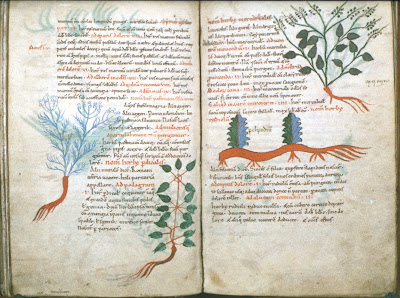I found interesting article a few weeks ago via a daily newsfeed:
Food and Nutrition:
Ancient medical texts may provide scientists with promising research avenues today.
Photo by Martin Macinski/Courtesy Flickr
Read more: here. According to an article from BBC News, the first concrete scientific proof of herbs and plants’ actual use in fighting various illnesses has been discovered in the form of clay pills from an Italian merchant vessel dated to 120 B.C.E. Tests by the Smithsonian Institute have revealed that these pills (kept sealed in tin boxes and “the size of coins”) contained carrot, parsley, wild onions, alfalfa, yarrow, celery and radish. They were likely used to treat intestinal diseases on board the ship and diluted with vinegar or water to ease ingestion.
This post is actually about carrots and a Carrot Museum!
Via Annals of Botany: Plant Science Research
Food and Nutrition:
 |
Photo by Martin Macinski/Courtesy Flickr
Read more: here. According to an article from BBC News, the first concrete scientific proof of herbs and plants’ actual use in fighting various illnesses has been discovered in the form of clay pills from an Italian merchant vessel dated to 120 B.C.E. Tests by the Smithsonian Institute have revealed that these pills (kept sealed in tin boxes and “the size of coins”) contained carrot, parsley, wild onions, alfalfa, yarrow, celery and radish. They were likely used to treat intestinal diseases on board the ship and diluted with vinegar or water to ease ingestion.
This post is actually about carrots and a Carrot Museum!
 |
| image from here. |
 |
| Image from Bibliodyssey - carrot images on left |
Now pictures of carrot varieties from mediaeval illuminated manuscripts have been brought together: Illustrations of Carrot, Daucus, Pastinaca and Staphylinos...Herbals are a particularly interesting group in the history of written communication in that they have always been in circulation since the antiquities and were not 'rediscovered' during the renaissance.
Despite the faithful transcription of the manuscript text by monastic scribes, distortions inevitably crept in as the work passed from one hand to the next. Greater variation exists among the illustrations which were often painted without reference to the living world.
Harry S. Paris, Marie-Christine Daunay and Jules Janick have had several beautifully illustrated papers in Annals of Botany over recent years with rigorous analysis of the cucumbers (Cucumis) and Solanaceae species : Occidental diffusion of cucumber (Cucumis sativus) 500-1300 CE: two routes to Europe. Ann Bot (2012) 109(1): 117-126http://dx.doi.org/10.1093/aob/mcr28
Medieval herbal iconography and lexicography of Cucumis (cucumber and melon, Cucurbitaceae) in the Occident, 1300-1458. Ann Bot (2011) 108(3): 471-484http://dx.doi.org/10.1093/aob/mcr182
The Cucurbitaceae and Solanaceae illustrated in medieval manuscripts known as the Tacuinum Sanitatis
Ann Bot (2009) 103(8): 1187-1205http://dx.doi.org/10.1093/aob/mcp055
Ann Bot (2009) 103(8): 1187-1205http://dx.doi.org/10.1093/aob/mcp055
Via Annals of Botany: Plant Science Research


6 comments:
Cool!
It is indeed!
S
a carrot museum? how cool is that! - the image of the old book of course resonates deeply with me - as does the importance of recognising how much wisdom is held quietly between the covers
It does immediately make one curious Ronnie ... the sight of such a book!
one of the first vegetables i ever grew was carrots. they're my kind of veggie, plant early (before bug season), eat lots of.
Ive not grown them Velma... but I do like to have them at my table...prepared in many different ways!
S
Post a Comment